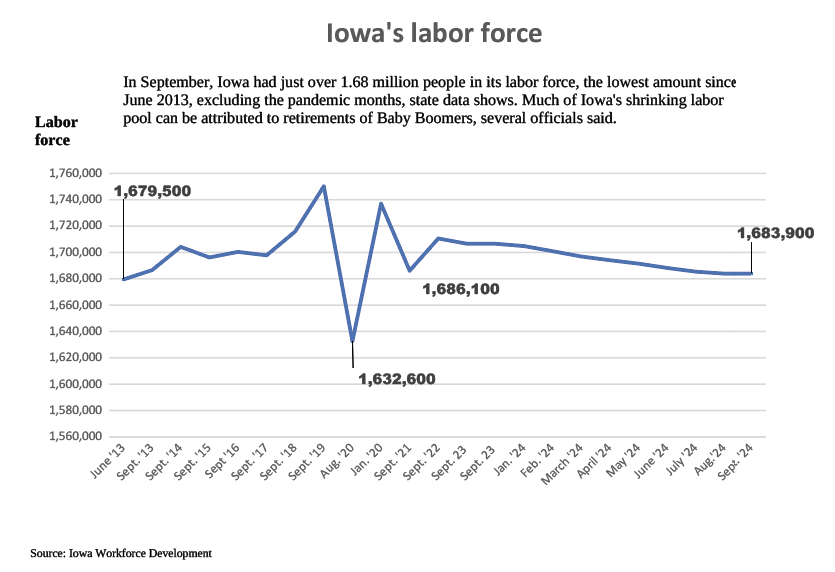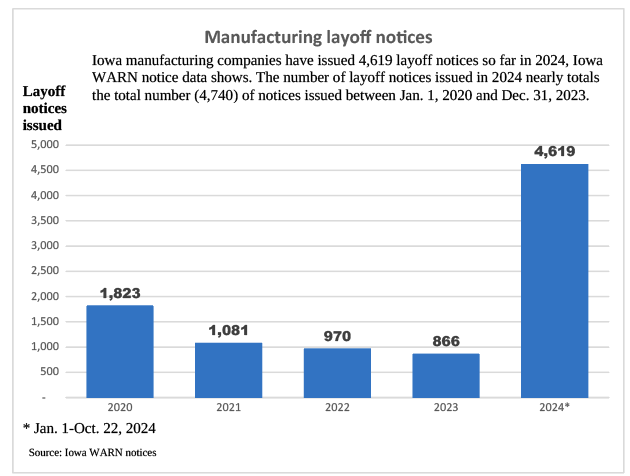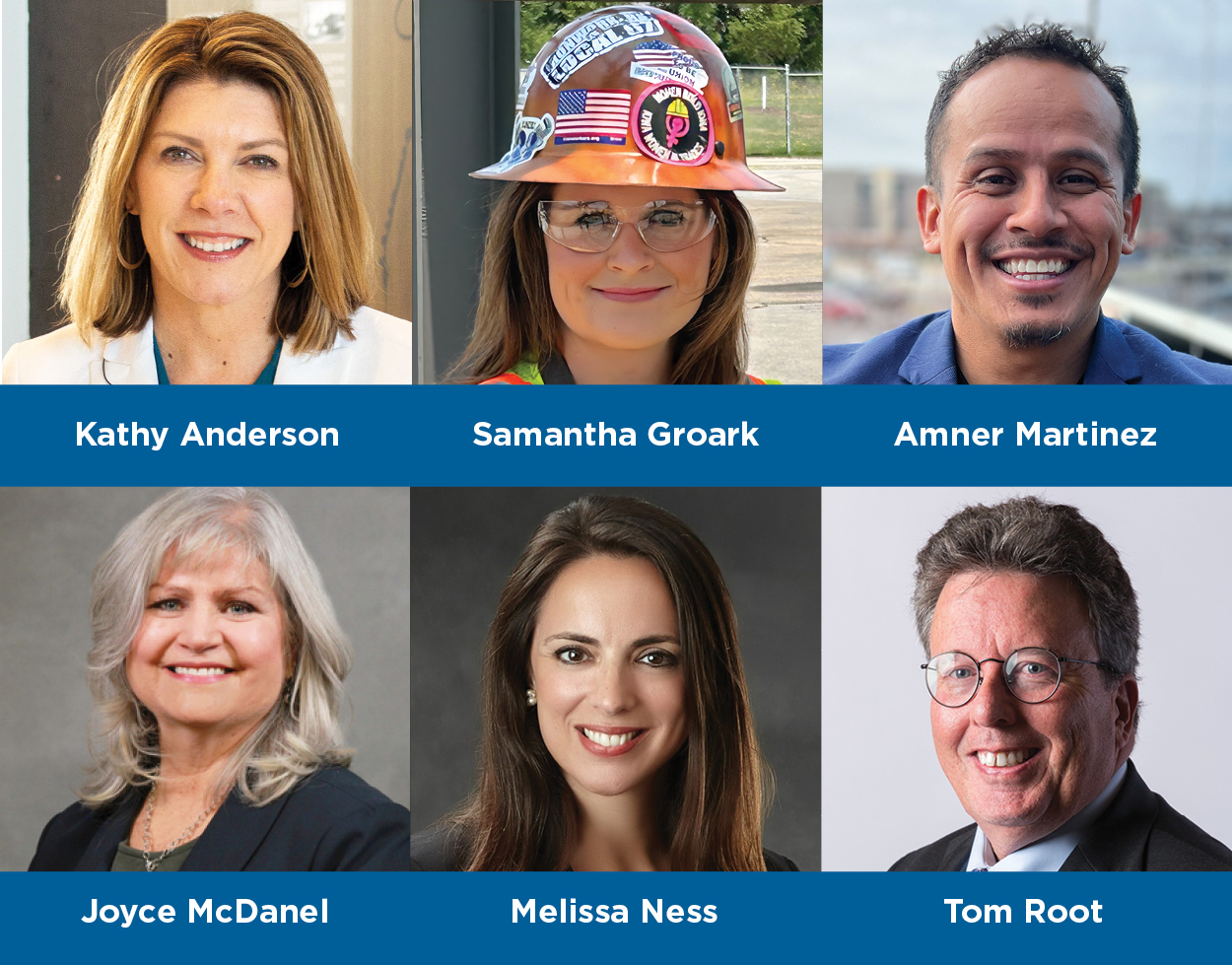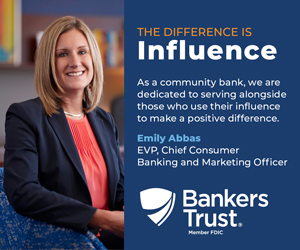How to attract, keep employees when labor force is shrinking

Kathy A. Bolten Nov 1, 2024 | 6:00 am
7 min read time
1,714 wordsBusiness Record Insider, Workforce DevelopmentBaby boomers in Iowa’s labor force who have reached retirement age are leaving the workforce at an increasingly fast clip, leaving employers scrambling to fill jobs from a shrinking labor pool.
In September, Iowa had just over 1.68 million people in its labor force, the lowest number — excluding the pandemic months — since June 2013, when the state’s labor force totaled 1,679,500, Iowa Workforce Development data shows. Since January, Iowa’s labor pool has decreased by 20,900 workers.

“I think that’s the biggest story in the labor market in the state,” said Ben Ayers, a senior economist with Nationwide. “Baby boomers are moving out of the labor force … and there’s not enough workers coming in the pipelines in the state to refill that. [Iowa] has a labor supply crunch.”
Ayers likened the demand for workers at a time when Iowa’s labor pool is getting smaller to the basic rules of supply and demand: Prices will be pushed up, including salaries and benefit packages, he said.
“We’re seeing wage gains that are still running well above average,” Ayers said. “At a certain point, companies may decide it’s too expensive. [The companies] are having a hard time finding workers, and the ones they do find have to be paid more. … Companies may start to look to other states that are a little more stable from a cost perspective and also have more availability of labor.
“That’s a big decision and a long-term one, but the labor crunch may dissuade some companies from expanding in the state.”
Iowa is not alone in having a dwindling labor pool, Ayers said. Most states in the Midwest face similar situations.
“I think with baby boomers moving more quickly into retirement, it is causing this to accelerate a little bit more,” Ayers said.
Panelists at the Business Record’s recent Jobs Outlook discussion acknowledged that Iowa’s labor pool is shrinking and that employers must look at new ways to attract and retain workers.
One out of every four Iowa employers is concerned about the number of people retiring, said panelist Kathy Anderson, a division administrator for Iowa Workforce Development. “Iowa is an older state. … Iowa and other states [in the Midwest and Northeast regions of the U.S.] all have high percentages of populations over the age of 65. In Iowa, that portion of the demographic is increasing. Younger population are, for the most part, flat or declining in our area.”

Nearly two years ago, Iowa Workforce Development launched the Business Engagement Division, a one-stop shop for the state’s employers to get help finding employees, start or expand a business, or developing employee training programs. One of the things the division is doing more frequently is connecting employers with traditionally underused pockets of the labor force, Anderson said.
People with disabilities “is probably the largest untapped talent pool,” Anderson said. The state has expanded its disability engagement bureau to include three people who help employers offer additional job opportunities for people with disabilities. “Sometimes that is addressing a physical workspace issue. Other times, it’s helping employers consider [hiring] populations they never considered before.”
For example, one Central Iowa company has redesigned part of its manufacturing floor in an effort to eliminate distractions, Anderson said. “That’s made it easier for them to hire people with autism,” she said.
The health care sector is among those having difficulty filling jobs. During the pandemic, a large number of health care professionals left the profession, said panelist Joyce McDanel, vice president of human resources for UnityPoint Health — Des Moines. Among the hardest positions to fill are registered nurses, medical lab scientists, physicians, advanced practice practitioners, therapists and certified nursing assistants, she said.
Over the next 10 years, the number of health care jobs in the U.S. is expected to increase by 17%, McDanel said. “We’re no longer in a position where we can wait for someone to apply for a position.”
UnityPoint Health has created a career pathway program for current employees who want to move into positions that require additional training. Some of the people in the program are high school students who work at UnityPoint, McDanel said. All cost associated with the program are paid for by UnityPoint Health.
UnityPoint Health also provides on-the-job training for high school students in apprenticeship programs, McDanel said. The health care provider hosts high school students at its Nurse Camp during the summer and participates in career-exploration days hosted at Des Moines Area Community College.
“Go back five years ago and hospitals rarely hired anyone under the age of 18,” McDanel said. “We’re adapting to make sure that we’re making room for more individuals who are entering the workforce or who are not currently working.”
The building trades is another sector in which workers are needed. The Central Iowa Building & Construction Trades Council represents 16 building trades unions in Central Iowa and their over 15,000 workers. “We provided the workforce for hundreds of local contractors and contractors that work across the state,” said panelist Samantha Groark, the council’s executive director.
The federal infrastructure and jobs act signed into law in 2021 provides $1 trillion to upgrade the nation’s infrastructure over the next decade. Other dollars have been earmarked by state and local governments to improve schools and build residences.
“There’s lots of dollars earmarked for projects and we just need the people to do them,” Groark said. Over 20% of the state’s construction workers are 55 or older, she said. Younger workers are not entering the work pipeline at the same rate older workers are retiring.
The council has stepped up its efforts to reach high school-age students and young adults through pre-apprenticeship and apprenticeship programs, Groark said. “We have got to steer away from this prevailing narrative that going to college is superior to learning a trade. Learning a trade typically doesn’t require a college degree, and many of our trades can offer comparable pay, if not more, than what college-degree earners are making.”
The council is also reaching out to women and minorities, Groark said. “These are really high-quality jobs. There should be no one in our communities that don’t have access or the ability to participate in these programs.”
Several of Iowa’s trade unions have begun offering maternity benefits and other benefits targeted at working mothers, Groark said. The groups have also stepped up efforts to promote labor protections.
“It’s really tough to recruit people into the construction industry if there’s folks that think that it’s not a safe occupation,” she said.
More takeaways
The following are additional takeaways from the Business Record’s recent Jobs Outlook panel discussion.
What is the top hiring challenge facing employers in 2025?
Melissa Ness, CEO and president, Connectify HR: We continue to see within several industries and functions, the talent shortages, magnified by the skills gap that we all are continuing to hear and talk about. I think that is widening even from last year. We continue to see employees continue to want to have greater flexibility of where and when and how they work. We are seeing employers that we serve ask about wages and benefits and what type of benefits. … We’re getting more questions than ever about some of those things.
We’re seeing more contributions to medical benefits. But even more than that, we’re seeing more [contributions to] ancillary benefits. Contributing more to dental; contributing more to a short-term disability plan, paying for that for their employees.
Amner Martinez, founder and CEO, Infinite Resources: All of the good workers are working. Anyone that is applying for unemployment right now probably wants to take it a little slower in finding a job. So essentially, employers right now are talking to people who are already working. The big challenge for employers right now is to put the best possible offer out there. There’s got to be a reason for a person to jump on board and come to you. It’s got to be a very attractive job offer.
The other challenge is that the job seeker and employer don’t know each other exists. … We are living in a digital age and it’s a challenge for employers to get in front of the right talent. Many employers only use [job search engines] to find employees. There’s got to be nontraditional approaches to getting in front of the talent who are already working. Podcasting, for instance. Use that to tell people about your company’s culture … and expose to them why you’re a good employer.
Through Oct. 22, Iowa manufacturing companies have issued 4,619 layoff notices, Iowa WARN data shows. That’s more than five times the 866 layoff notices issued in 2023. What is causing the layoffs and what is the outlook for 2025?
Thomas Root, associate professor, Drake University: When you think about manufacturing, we’ve been hurt a lot by the higher interest rate environment, hurting some things like agriculture and production. When we think about agriculture, we think about John Deere layoffs and that is a big part of our manufacturing sector. Looking forward, it is not a great outlook. [Creighton University produces a monthly economic outlook] and in Iowa, in September, new manufacturing orders were at one of the lowest levels it’s been at for the last year. It was at 40 on a scale of 100. [A score of 50 or higher indicates expansion. The index] has been below 50 for the past few months. I think manufacturing is going to continue to be a problem; it’s going to create a little bit of a drag for us relative to the rest of the economy.

Explain the importance of manufacturing and manufacturing jobs to Iowa’s economy
Root: Fourteen percent of [Iowa’s] jobs are in the manufacturing sector. But that’s actually small relative to its impact on [gross domestic product]. For output for Iowa, it is about 18% of output in the manufacturing sector. So … it is a significant portion of the economy when you think about the impact it has overall.

Kathy A. Bolten
Kathy A. Bolten is a senior staff writer at Business Record. She covers real estate and development, workforce development, education, banking and finance, and housing.










